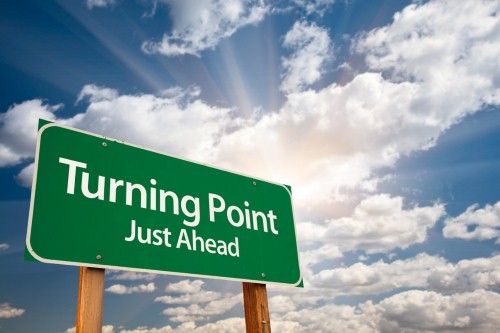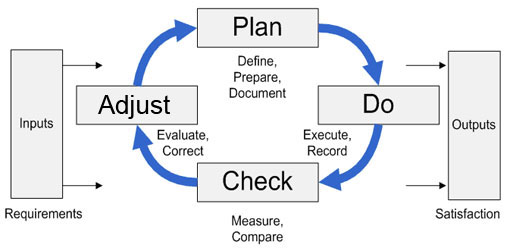 I just finished reading the book “Ready, BEGIN! – Practical Strategies for Cultivating Courage” by Lawrence M. Kryske and I thought it would be a great idea to post my notes here instead of keeping them for my eyes only.
I just finished reading the book “Ready, BEGIN! – Practical Strategies for Cultivating Courage” by Lawrence M. Kryske and I thought it would be a great idea to post my notes here instead of keeping them for my eyes only.
So here are my notes on the book “Ready, BEGIN!“.
__________________________________________________________________________________________
Courage; A word with a thousand faces.
“Be courageous! I have seen many depressions in business. Always America has come out stronger and more prosperous. Be as brave as your fathers before you. Have faith! Go forward.”
– Thomas A. Edison
“Courage is rightly esteemed the first of human qualities because it is the quality which guarantees all others.”
– Winston S. Churchill
- Leaders respond to life’s challenges with vision, courage, and determination.
- Courage is the most important leadership characteristic.
- A person sources courage from the inside out.
COURAGE HAS MANY NAMES:
- Boldness
- Valour
- Heroism
- Daring
- Intrepidness
- Bravery
- Audacity
- Fearlessness
- Fortitude
- Mettle
- Gallantry
COURAGE IS ALSO REFERRED TO AS HAVING:
- · Guts
- · Cheek
- · Backbone
- · Nerve
- · Heart
- · Face
- · And some other anatomical parts!
THINGS COURAGE MAKES POSSIBLE:
- Leading a team to victory
- Public speaking
- Devotion to duty
- Standing up for the underdog
- Asking for a first date
- Asking for a sale
- Telling your boss what he needs to hear, not what he wants to hear
- Going where no one has gone before
- Taking an unpopular stand
- Protecting the innocent from harm
- Asking for a pay raise
- Buying a first house
- Answering a cry for help
- Serving in the military, a police officer, a firefighter or paramedic
- Looking for a solution to a difficult problem
“Courage is a moral quality; it is not a chance gift of nature like an aptitude for games. It is a cold choice between two alternatives, the fixed resolve not to quit; an act of renunciation which must be made not once but many times by the power of the will. Courage is will power.”
– Lord Moran
“Standing up for what we think is right is not easy, but it may well get easier if we cultivate the habit of doing so.”
– William Ian Miller
- Courage is the ability to confront fear, pain, danger, risk, uncertainty and intimidation.
- Physical courage is courage in the face of physical pain, hardship or threat of death.
- Moral courage is the courage to act rightly in the face of popular opposition, shame, scandal or discouragement.
- Courage “is will power”.
- Physical courage may “decay” after repeated exposure to life-and-death situations.
- Moral courage may grow when a person is engage in actions concerning his moral stand.
- Courage is the key ingredient in transforming both our lives and the world.
- All people have the capacity to be courageous.
“To be courageous requires no exceptional qualifications, no magic formula, no special combination of time, place, and circumstances. It is an opportunity that sooner or later is presented to us all.”
– John F. Kennedy
“If we take the generally accepted definition of bravery as being a quality which knows no fear, I have never seen a brave man. All men are frightened. The more intelligent they are, the more they are frightened. The courageous man is the man who forces himself, in spite of his fear, to carry on.”
– General George S. Patton, Jr., U.S. Army
“I wanted you to see what real courage is, instead of getting the idea that courage is a man with a gun in his hand. It’s when you know you’re licked but you begin anyway and you see it through no matter what.”
– Harper Lee
“Courage and cowardice are antithetical. Courage is a inner resolution to go forward in spite of obstacles and frightening situations; cowardice is a submissive surrender to circumstance. Courage breeds creative self-affirmation; cowardice produces destructive self-abnegation. Courage faces fear and thereby masters it; cowardice represses fear and is thereby mastered by it. Courageous people never lose the zest for living even though their life situation is zestless; cowardice people, overwhelmed by the uncertainties of life, lose the will to live. We must constantly build dikes of courage to hold back the flood of fear.”
– Dr. Martin Luther King Jr.
“Bravery is being the only one who knows you’re afraid.”
– Colonel David Hackworth, U.S. Army
“The real voyage of discovery consists not in seeking new landscapes, but in having new eyes.”
– Marcel Proust
“Courage is being scared to death and saddling up anyway.”
– John Wayne
“To do the thing you think you cannot do; that’s courage.”
– Eleanor Roosevelt
COURAGE IS NEEDED WHEN A PERSON:
- Exposes himself or herself to physical danger.
- Takes an unpopular stand.
- Refuses to compromise one’s integrity, honour, values, principles, beliefs, etc.
- Confronts fear by taking action.
- Goes where no person has gone before.
- Does something that he or she has never done before.
- Genuine courage is easily discerned.
- Courage need not always be a life-or-death struggle.
- Moral courage often begets physical courage.
- Courage is a fundamental quality of both leadership and character.
COURAGE IS COSTLY! SOME OF THE THINGS COURAGE MIGHT COST INCLUDE:
- Our friends
- Our money
- Our job
- Our time
- Our contentment
- Our influence
- Our life
SOME OF THE THINGS WE MIGHT GAIN BY BEING COURAGEOUS ARE:
- Confidence
- Self-esteem
- Peace of mind
- Character
- Success
- Victory
- Love
- Joy
- Safety
- Security
- Honor
- Freedom
- Justice
- Loyalty
- Peace
- Respect
- Trust
- Wealth / Abundance
“Courage is generosity of the highest order.”
– Charles Caleb Colton
- The necessary conditions for courage to exist are the presence of fear and a cost for taking some action.
- Courage is a tool, a means to an end.
- There are many possible reasons why people are courageous, but love is one of the key factors.
- Courage is an action sport not a passive endeavor. It takes place on the playing field of life, not from the safety of the couch watching the actions of others. There are no substitutes or alternatives. We must do something, take some action.
SOME OF THE MOST COMMON FEARS PEOPLE HAVE:
- Failure
- Success
- Embarrassment
- Ridicule
- Loss
- Rejection
- Disgrace
- Making a mistake
- Public speaking
- The dentist
- Pain
- Death
- Spiders
- Snakes
- Losing control
- Responsibility
- Heights
- Aging
- Being fired
- Bad news
- Heart attack
- Terrorism
- Change
- The unknown
“Keep your fears to yourself, but share your courage with others.”
– Robert Louis Stevenson
“The only thing we have to fear is fear itself – nameless, unreasoning, unjustified terror which paralyzes needed efforts to convert retreat into advance.”
– Franklin Delano Roosevelt
“Never let the fear of striking out get in your way.”
– Georges Herman “Babe” Ruth
- Humans are fearful creatures.
- Each industry has an array of specific fears.
- The presence of fear is the necessary ingredient in order for courage to be exhibited.
- Freedom from fear means we have the freedom to exercise courage and act despite the presence of fear.
- Every person’s perception of fear is real, but it is not necessarily reality.
- Fear is a normal protective mechanism.
- Human responses to fear are fight, flight, or freeze.
“Action is the fundamental key to all success.”
– Pablo Picasso
“Fear is what you feel. Courage is what you do.”
– Naomi Kryske
- Courage is taking action despite fear.
- The action must be appropriate for the situation.
- Fear is something you feel. Courage is something you do.
- Fear does not necessarily disappear when we get into action.
“Courage is resistance to fear, mastery of fear – not absence of fear.”
– Mark Twain
10 TECHNIQUES TO ELIMINATE FEAR:
- Do the things you fear and the fear goes away.
- Develop a tolerance to fear.
- Teams and team cohesion.
- Team rituals; huddles, songs, cheers, martial music, bagpipes, flags, uniforms, gestures, national anthems, and mutual encouragement.
- Training and cross training.
- Discipline.
- Humor.
- Comfort food.
- Self-encouragement, self-talk, visualization, affirmations.
- Prayer.
- Courage-building strategies help us to act despite persistent fears.
- Training and cross training may be the most effective courage building (and risk management) strategy for businesses.
- Discipline, humor, self-talk, and prayer help people manage fears.
- Since we learn by doing, we need to experience being courageous instead of just understanding intellectually its nature.
“Success cannot be guaranteed. There are no safe battles.”
– Winston S. Churchill
- Risks are inherent in life.
- The only risk-free people are dead.
- People must find appropriate ways to deal with risks.
- Despite our best plans, there are always elements or situations that are not taken into consideration.
“Nothing is gained without some risk.”
– Louis Lamour
“All life involves the management of risk, not its elimination.”
– Walter Wriston
THINGS THAT CAN NEITHER BE CONTROLLED NOR INFLUENCED:
- Most people’s reactions or behaviours.
- The opinions and honesty of strangers.
- World events.
- The weather: hurricanes, tornadoes, earthquakes, tsunamis, ice storms, droughts, or heat waves.
- Traffic congestion.
- The price of gas.
- The internet and its accessibility.
- Airlines: When they will depart and whether your baggage will arrive with you.
- The outcome of a sport event.
- Government rules, regulations, and taxes.
- The behaviour of the stock market.
- The day you die.
THINGS THAT CAN BE INFLUENCED:
- The opinions of family or co-workers.
- On occasion, other people’s behaviour.
- The safety of your children.
- Some event in which you are involved.
- Your working environment.
- The time it takes to get certain tasks done.
- Your pet.
- Your personal success.
THINGS THAT CAN BE CONTROLLED:
- Your discretionary time.
- How hard you will work.
- Your thoughts.
- Your emotions.
- Your attitude.
- Your tongue.
- Who will be your friends?
- Who will be your heroes?
- Your personal commitment.
- Your professional and personal affiliations.
- Your spiritual journey.
- Your discretionary money.
- Your worries.
- Your response to situations, events, and people.
“God grant me the serenity to accept the things I cannot change; courage to change the things I can; and wisdom to know the difference.”
– Reinhold Niebuhr
“The empires of the future are the empires of the mind.”
– Winston S. Churchill
10 WAYS TO TAKE APPROPRIATE RISKS:
- Exercise restraint/don’t be impulsive.
- Learn from mistakes.
- Embrace excellence not perfection.
- Don’t attempt to control the uncontrollable.
- Be open to new ideas and actions.
- Be persistent and tenacious.
- Be ready to dance with changing circumstances; be resilient.
- Be nonjudgmental.
- Be innovative in problem solving.
- Don’t be afraid to be vulnerable.
“What would life be if we had no courage to attempt anything?”
– Vincent van Gogh
- Balanced risk-reduction strategies can help us to respond appropriately.
- It is a waste to spend energy and time on things over which we have no control or influence.
- Since the first steps are always the hardest and most critical, get started, build momentum, and keep moving.
- Procrastination is a thief that steals our time, our productivity, our dreams, our vitality, and our lives.
- A sense of urgency is necessary to take back control of our lives.
10 PRACTICAL STRATEGIES TO HELP OVERCOME THE ADDICTION OF PROCRASTINATION:
- Commit to solve the problem.
- Consider the cost of procrastination.
- Take back control!
- Identify compelling reasons for not procrastinating.
- Develop a “Do it NOW!” attitude.
- Set deadlines/make public promises.
- Divide and conquer the problem.
- Delegate when possible.
- Encourage yourself with positive self-talk.
- Celebrate your successes.
THE 7-17-27 STAIRSTEP APPROACHTM
- Identify a project that causes you to procrastinate.
- Commit to working on the project for 7 minutes and then do so.
- Briefly stop, and then immediately recommit to work for 17 minutes and do so.
- Finally, briefly stop, and immediately recommit to work for 27 minutes and do so.
- Now stop and celebrate that you just spent 51 minutes at a task that you’d been putting off!
- Repeat the 7-17-27 process again and again. You’re now on your way toward getting the job done.
“Do not let what you cannot do interfere with what you can do.”
– John Wooden
“Somebody should tell us right at the start of our lives that we are dying. Then we might live life to the limit, every minute of every day. There are only so many tomorrows.”
– Michael Landon
- Leaders can only delegate authority, not responsibility.
- The 7-17-27 Stairstep ApproachTM is a practical way to get started and keeping moving.
- It’s possible that our procrastination in the past has created an unsolvable problem because we will run out of time.
“Crisis often creates clarity.”
– Dr. Paul L. Escamilla
“Courage is the freedom to choose.”
– Norman Cousins
“The test of character is not ‘hanging in’ when you expect light at the end of the tunnel, but performance of duty and persistence of example when you know no light is coming.”
– Admiral Lames B. Stockdale, U.S. Navy
- The clearer we are about what we value, the easier it will become to act with courage when the situation arises.
- Moral courage is something you observe but cannot predict.
- Moral courage hinges on the strengths of one’s convictions, values, and beliefs.
- Clarity of purpose solidifies our courage.
- The need to focus and concentrate on our challenges means we need to keep our eye on the ball.
- Intense laser-like focus illuminates one’s values and helps to minimize peripheral distractions.
- To avoid sapping one’s focus, maintain calm. Do not be impulsive or hasty.
- Scientists, explorers, adventurers, and pioneers seek to fill in the gaps of human knowledge and understanding.
- Curiosity can be a fuel that propels a person to act courageously.
- Creative people possess a high degree of curiosity and tenacity. These attributes are needed to give birth to new ideas. This takes courage.
“The ultimate measure of a man is not where he stands in moments of comfort and convenience, but where he stands at times of challenge and controversy.”
– Dr. Martin Luther King, Jr.
- A person can cultivate courage by stepping out of the one’s physical, intellectual, emotional, or spiritual comfort zones.
- Step by step is the key. Eat no more than you can chew. This allows self-imposed changes to become mastered and internalized.
- Volunteering, mentoring, forgiving, and being flexible challenge our basic nature.
- Listen with your eyes, see with your heart, and listen to the speaker’s words for content, emotion, and context.
- Listening is an active sport, not a passive one. One must listen on purpose.
- To be right means that someone must be wrong. Become more flexible, and suspend your point of view where appropriate.
“The courage to speak must be matched by the wisdom to listen.”
– Anonymous
“Courage is not the towering oak that sees storms come and go; it is the fragile blossom that opens in the snow.”
– Alice M. Swaim
“Courage doesn’t always roar. Sometimes courage is the little voice at the end of the day that says I’ll try again tomorrow.”
– Mary Anne Radmacher
- We can cultivate courage by changing our perspectives.
- We can always choose how we react to circumstances. Choose an empowering perspective instead of a discouraging one.
- Surviving a calamity means focusing on what you have, not what you have lost. Continue to look forward/move forward.
- Leaders find ways to make change and stress work for them.
- Courage is a catalyst for change.
“My heroes tend to be people who successfully accomplish things I could not dare even to contemplate.”
– Paul Johnson
“Stories of the past offer hope and inspiration, but they cannot supply courage itself. For this, each person must look into his own soul.”
– John F. Kennedy
- Heroes act with personal courage regardless of the consequences to themselves.
- Heroes and role models, use their varied achievements as a source of inspiration, not intimidation.
- Courageous people exercise patience.
- We can use best practices from other industries to solve problems and thus strengthen our courage muscle.
- A victory log can help us prepare for future challenges by remembering past successes.
- Everyone has the capacity to be a leader, to be creative, and to exercise courage.
- Organizations often fail to tap into the talents, creativity, and energy of every worker.
- No one can predict who will be courageous during crisis.
“It is not because things are difficult that we dare not venture. It is because we dare not venture that they are difficult.”
– Lucius Annaeus Seneca
“Freedom lies in being bold.”
– Robert Frost
“If you want to increase your success, double your failure rate.”
– Thomas J. Watson, Sr.
- Build boldness by accepting difficult assignments as well as by broadening one’s experience.
- Develop sound judgment by adopting a discerning attitude. Ask the question ‘so what?’ and ‘now what?’ at every opportunity.
- Critique individual and team battles with a plan-do-check-act method.
THE DESTROYERMEN’S APPROACHTM TO DECISION MAKING
- What is the problem?
- What are various options to solve the problem?
- What is the worst-case solution?
- What is the best-case highest-payoff solution?
- What is the most likely outcome for each solution?
- Are there any force multipliers in a solution?
- What is the most easily-executed solution?
- Based on the above, what is the best solution to the problem?
“A pearl is the outcome of a problem well managed.”
– Dr. Paul L. Escamilla
“There are no great men, only great challenges that ordinary men are forced by circumstances to meet.”
– Fleet Admiral William F. Halsey, Jr. U.S. Navy
“Necessity does the work of courage.”
– George Eliot
- A few courageous trained men in each group can help other team members be courageous.
- Necessity may compel people to be courageous.
- Leaders motivate their followers with enthusiasm, encouragement, and generosity.
- Leaders encourage, that is, give courage to their people.
- Leaders should not be stingy whit their encouragement.
- Effective praise will lubricate the wheels of leadership.
- Vision without courage and determination leads to hopelessness; you see it, but you don’t believe you can get it!
- Courage without vision and determination leads to tilting at windmills, taking on too many tasks and challenges that lead nowhere.
- Determination without vision and courage makes us rigid, dogmatic, and more likely to place blame for our lack of progress on others.
- To solve problems, leaders mobilize and motivate their people in person, not by memo.
- Leadership which can be described as vision, courage, and determination can be further distilled to ‘follow me’.”
- Leaders and followers, like matter and energy, are two forms of the same thing.
“Whatever course you decide upon, there is always someone to tell you that you are wrong. There are always difficulties arising which tempt you to believe that your critics are right. To map out a course of action and follow it to the end requires courage.”
– Ralph Waldo Emerson
“Life shrinks or expands in proportion to one’s courage.”
– Anaïs Nin
“Men don’t follow titles. They follow courage.”
– William Wallace to Robert Bruce in Braveheart
“Great things are done more though courage than through wisdom.”
– German proverb
- To be courageous means recognizing that there is a sens of urgency to what we do.
- Being forehanded helps prevent being surprised – a source of fear.
- We do not need more information. We just need more courage!
- One of the greatest legacy a person can leave is that of a leader of men and women.
- We must rediscover the spirit of our childhood. We can lead courageous lives both at work and at home.
- Face challenges head on and without delay. That’s courage!
THE FIVE CORNERSTONES OF COURAGETM
- Courage is taking action despite fear.
- Courage grows out of clarity of purpose.
- Courage is like a muscle. We can develop it by using it.
- Courage resides in everyone.
- Courage is contagious.
“What gives us courage is believing what we want is achievable.”
– Naomi Kryske
“The difference between getting somewhere and nowhere is the courage to make an early start.”
– Charles M. Schwab
“By our courage, our endurance, and our brains, we have made our way in the world to the lasting benefit of mankind. Let us not lose heart. Our future is one of high hope.”
– Winston S. Churchill
“You ask: ‘What is our aim?’ I can answer in one word: It is victory, victory at all costs, victory in spite of all terror, victory however long and hard the road may be; for without victory there is no survival.”
– Winston S. Churchill
THE CHURCHILL FACTORS
VISION
“If you can see it, you can paint it!”
What do I want to be, do, or have?
COURAGE
“Do it now, and don’t look back!”
What do I need to do to get started?
DETERMINATION
“Never give in!”
How do I achieve my outcome?
Some suggested movies about COURAGE.
Apollo 13 (1995) Bridges of Toko Ri (1955)
Zulu (1964) Glory (1989)
We Were Soldiers (2001) Naked Prey (1966)
Saving Private Ryan (1998) Braveheart (1995)
Band Of Brothers HBO series (2001) Das Boot (1981)
The Insider (1999) Gandhi (1982)
United 93 (2006) The Lost Battalion (2001)
Flags of Our Fathers (2006) Battle of Britain (1969)
Twelve Angry Men (1957) The Alamo (2004)
Letters From Iwo Jima (2006) Backdraft (1991)
The Gathering Storm (2003) Mississippi Burning (1988)
The Great Escape (1963)
_____________________________
Thanks for reading, Patric J. Dufficy
 Be the first to like.
Be the first to like.

 During 2013, I thought about several scenarios. I even started building a website for my future new business in web and graphic design.
During 2013, I thought about several scenarios. I even started building a website for my future new business in web and graphic design.


















 Learning how to properly respond to them could greatly improve your life.
Learning how to properly respond to them could greatly improve your life.





